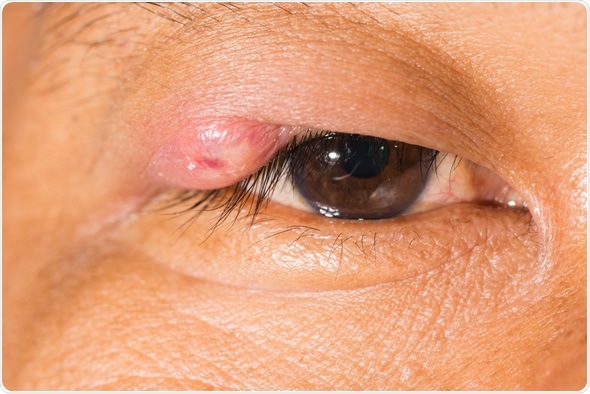For The Latest Medical News, Health News, Research News, COVID-19 News, Pharma News, Glaucoma News, Diabetes News, Herb News, Phytochemical News, Thailand Cannabis News, Cancer News, Doctor News, Thailand Hospital News, Oral Cancer News, Thailand Doctors
A stye or sty, also known as a hordeolum, is a small, painful red lump that develops on the inside or outside of an eyelid. It is caused by a bacterial infection that can develop inside the root follicle of an eyelash, inside the apocrine gland or within the sebaceous gland attached to the follicle. The stye takes only a few days to develop.
The stye is an acute abscess which creates a lump that appears to have a yellow point in the middle. It is filled with pus. The condition is most often caused by staphylococcal bacteria, which is a common commensal in our bodies. It causes infection only when it gains entry into the body through a disrupted epithelium. The bacteria can spread quite easily from the nose, where it is usually located, to the eye to cause a stye.
Styes may develop in both children and adults. The presence of eyelid inflammation, or blepharitis, predisposes to the formation of a stye.

Styes occur more commonly in conditions which cause blepharitis, such as ocular rosacea, diabetes which predisposes to bacterial infections, and seborrheic dermatitis. The use of old or expired makeup, and the practice of sharing cosmetics, may also increase the chances of developing a stye.
A patient with a stye may complain of:
Sometimes there may be more than one stye on an eye, or styes on both eyes. This is less common, however.
Styes do not affect vision. However, there may be other minor complications, such as:
Styes usually heal without the need for medical treatment. Breaking a stye open is never recommended. If a stye persists for more than 4-5 days, or if the infection spreads to the whole eyelid, it is wise to seek medical advice.